Endangered: A Bird and a Tribe
Alberto was calm when he asked us to leave. He was young, maybe 20 or so. But he was the keeper of this craggy terrain, far above the green tree line, in the northernmost mountain range in Colombia.
The land, a rugged and remote landscape of silvery rock and six gleaming lagoons, is sacred to Alberto’s people, the indigenous Kogi tribe, which has called it home for centuries. It was a stressful responsibility for him to be put in charge of the territory, and he was eager to ensure that we came and left the area quickly.
It didn’t matter that a few days before, we had surrendered rice, oatmeal, and 30,000 pesos (about $10) to a middle-aged Kogi man, Santiago, encountered during our ascent. Santiago had demanded the goods before letting us continue upward to the lagoons; his young companion glowered at us, gripping a rusty machete. But Alberto, who, like most Kogi did not share his last name with me, nor even seemed interested in using one, said another Kogi leader was coming up the next day, and that he needed to be able to say that he had dispensed with the visitors — no matter our reasons for being there.
My reason was singular: I had traveled 2,000 miles from my cozy Brooklyn apartment, trekked for days in the blistering sun and thin air of the mountains of the Sierra Nevada of Santa Marta, all for a glimpse of a high-altitude hummingbird, less than five inches tall, known as the Blue-bearded helmetcrest.
The helmetcrest is vanishingly rare, purported to be the most endangered species in Colombia, one of the most ecologically diverse countries in the world. And until March of last year, it hadn’t been seen in the wild for nearly 70 years. The International Union for Conservation of Nature (IUCN) lists it as a critically endangered species; for decades researchers thought it might be extinct.

I had traveled 2,000 miles to the Sierra Nevada of Santa Marta for a glimpse of a hummingbird.
Visual: UNDARK/iStock.com
I’d become interested in the helmetcrest more than a year before I went looking for it. I’d seen the bird mentioned in a journal I was reading and become fascinated by its apparently uncommon natural history and peculiar ways. People who had seen it painted a vivid picture of its dazzle in the high mountains, a flash of fluffed feathers, a glimmer of blue stirring the clear air. I’d never been a birder, but after a little more research, I found myself irresistibly intrigued: I wanted to see the helmetcrest with my own eyes.
And I wanted something more. I wanted some answers about why this tiny bird, living so far from the usual heavy footprint of human disruption, was so imperiled. In my brief time in the Sierra Nevada, I would not find an easy answer, but rather lessons both unexpected and essential in the complex ethics of conservation.
To understand the perilous position of the helmetcrest, you have to also understand the perilous position of the Kogi — birds and humans clinging to life on the edges of rocky mountains, both competing for existence in this tiny remaining corner of the once-wild world. It’s a near perfect example of a conflict that plays out in various places around the globe — a conflict between indigenous cultures and endangered wildlife, with losses being tallied on both sides of the fight.
So when Alberto asked us to leave, we were disheartened, but began our descent a full day earlier than we’d planned.
“Increasingly, people realize the strong social side in conservation — why some species should be protected and why others should not — [is] not just based on ecology,” says Stephen Redpath, a specialist in human-wildlife conflicts and a conservation scientist at the University of Aberdeen’s Institute of Biological & Environmental Sciences in Scotland. “It’s fundamentally about people, and people’s choices.”
◊
The Blue-bearded helmetcrest, or Oxypogon cyanolaemus, is named for the males’ distinctive blue beard and cowlick-like crest. The females of the species are similar, with creamy collars and bodies speckled in hues of brown and green, but they lack the fancy headgear of the males, which had always looked to me in photos like sly, turtleneck-wearing grandpas who had awkwardly tried to go punk.
The bird doesn’t just look bizarre, it acts bizarre too, even in comparison to other hummingbirds. It moves slowly, perching on branches or boulders for minutes on end. It walks on the ground to find food, and it’s one of the few species to experience nightly torpor, a state of lowered temperature and metabolic rate — the only way it can survive the sub-freezing temperatures of the high mountain climate that set in once the sun goes down.
At least, scientists suspect that the bird behaves like this based on observations of related species. Perhaps the most striking thing about the helmetcrest is how little biologists definitively know about its behavior. Because scientists hadn’t observed it in the wild for nearly 70 years, everything they know about its morphology comes from museum specimens last collected in the mid-1940s.
Over the past decade, several groups of scientists have made the difficult ascent to the Sierra Nevada’s páramo — the diverse alpine ecosystem wedged between the tree line and the snow line — to explore the banks of some lagoons where they suspected the helmetcrest could be found. They wanted to try to learn more about it, or to at least catch a glimpse of it. All of them failed, save for a pair of Colombian birders with the Bogotá-based non-profit ProAves, who, by a stroke of luck, spotted three males in March of 2015. (Sebastian Ballesteros, my guide for this trip, told me that he rediscovered the helmetcrest before that, but his photos of it were stolen.)
The helmetcrest is hard to find, not just because it’s tiny and lives in an incredibly remote habitat, but because that habitat overlaps with territory belonging to the Kogi, who are one of the 90 or so indigenous groups in Colombia.
The Kogi are known as a deeply religious, insular society, and one famed for a historic reverence for nature. Outsiders from Colombia and beyond have been drawn to the Kogi in their quest for spirituality and ancient wisdom. To protect land they deem sacred, the Kogi restrict outsiders from trampling into certain areas of their Sierra Nevada home, keeping watch over the steep paths that lead to these cherished lands.
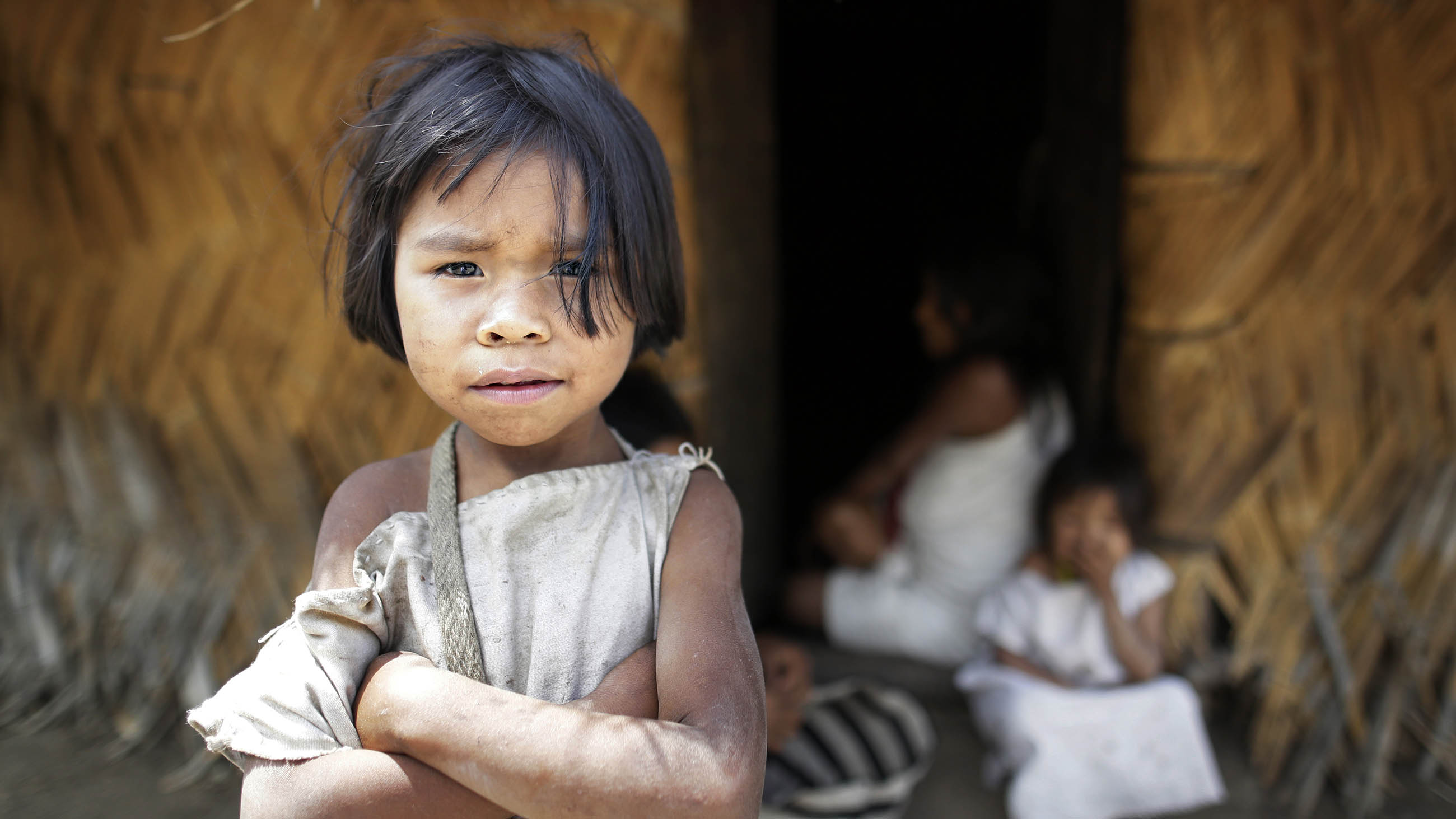
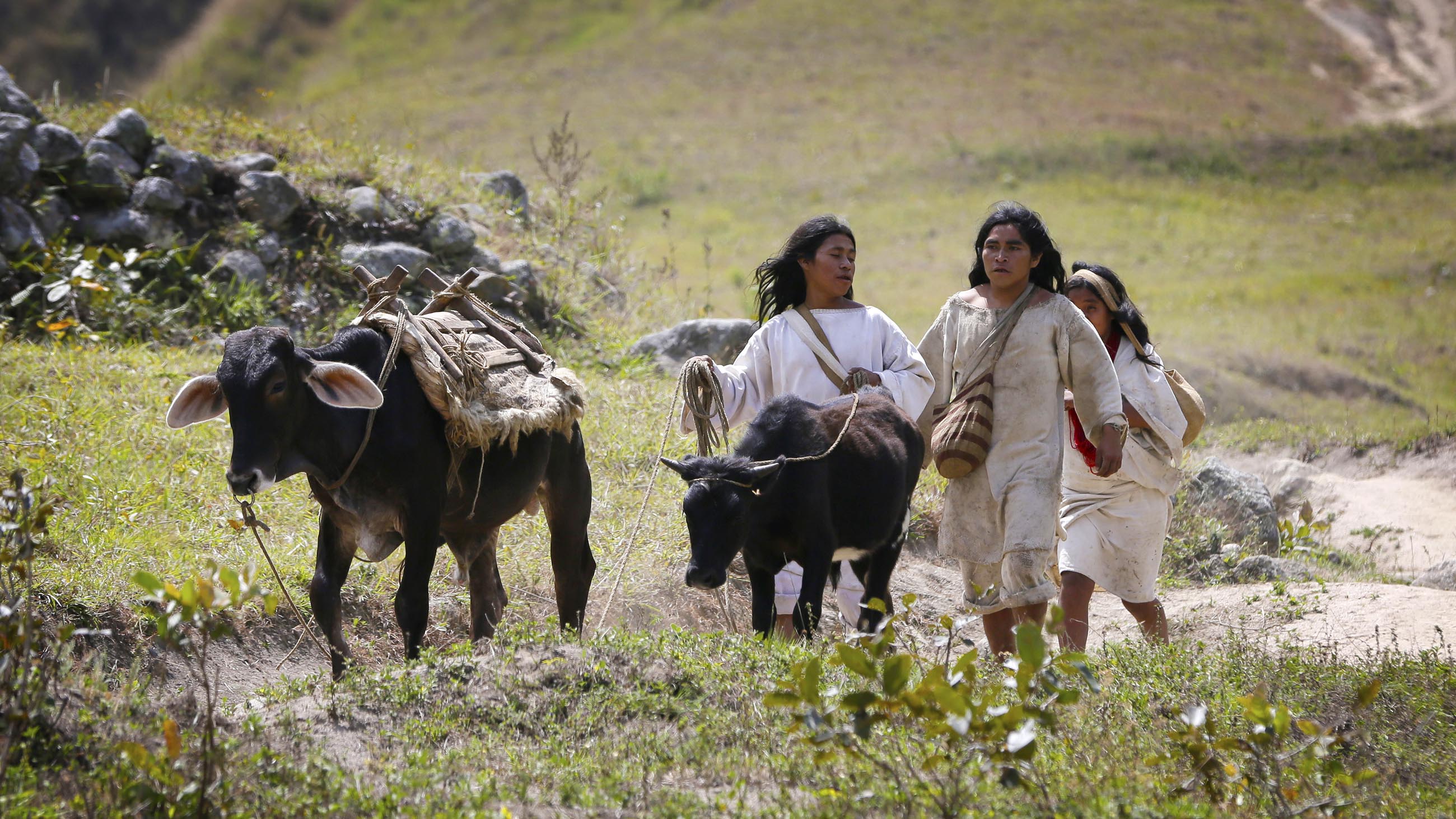
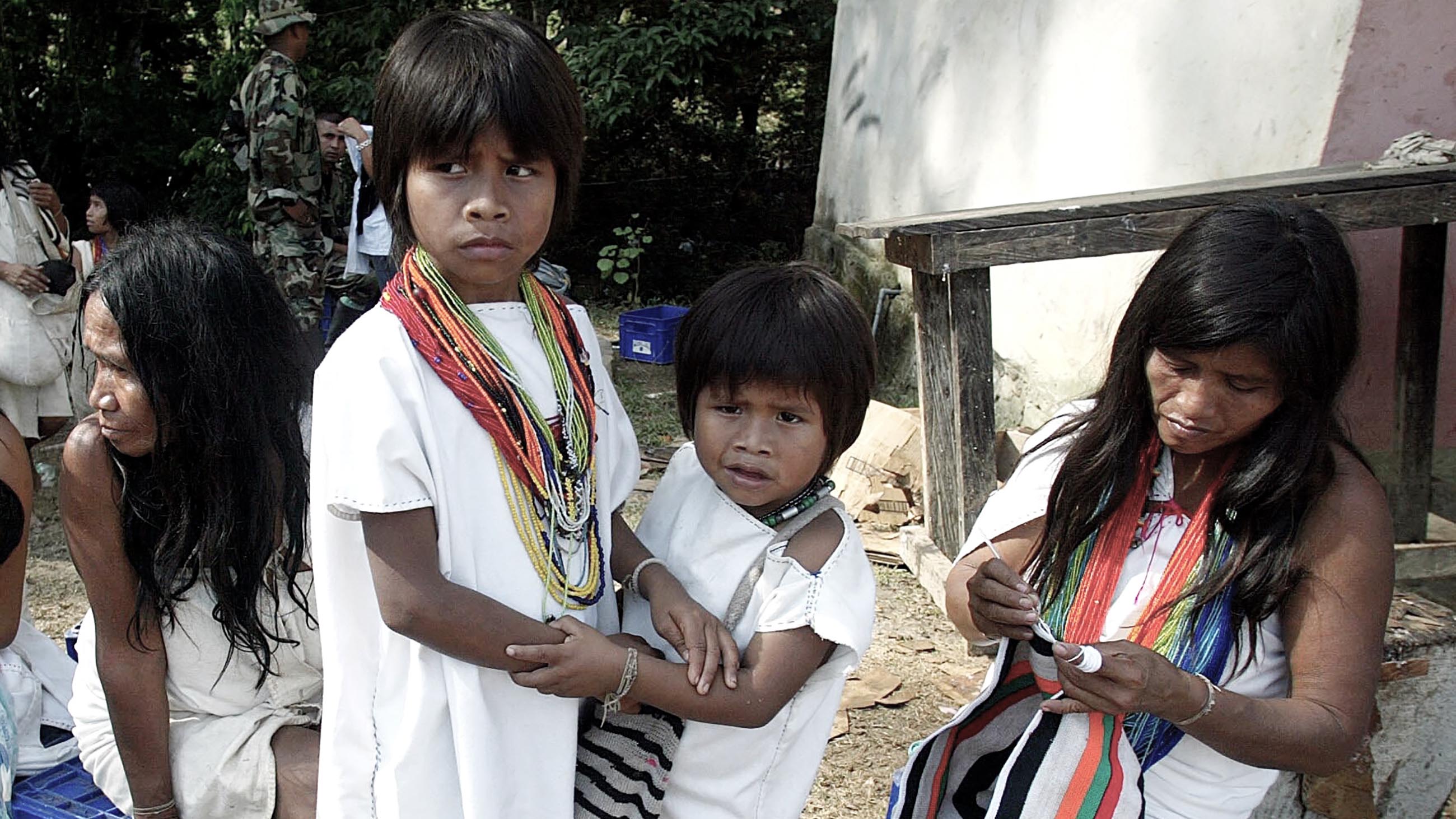

“The [Kogi] believe that they are the guardians of life on earth,” writes British producer and author Alan Ereira in his book about the tribe titled “The Elder Brothers.” “They see the world as a single living being which they have to look after and care for. Their whole way of life is dedicated to nurturing the flora and fauna of the world; they are, in short, an ecological community whose mortality is wholly concerned with the health of the planet.”
Ironically, ecologists believe that the Kogi themselves seem to be doing the greatest harm to their own ecosystem. They support themselves in part by raising cattle to eat and to sell, and farmers periodically set fire to the páramo to provide their livestock with the most tender grasses. The fires blaze across the delicate landscape, and Alberto joked when my guide asked about them: “It’s not very easy to call the fire department up here.”
In the process, the Kogi and their cattle damage the habitat, leaving little food for the helmetcrest to eat, and few branches upon which to perch. “These high elevation species are often really widely dispersed — because of their high metabolism, they need a huge area in order to find enough to eat, even though they’re tiny birds,” says Pamela Rasmussen, an expert on rediscovered bird species and the assistant curator of Mammalogy and Ornithology at the Michigan State University Museum. “To find enough food even in the best of times would be challenging in that habitat.”
As the birders from ProAves who “rediscovered” the helmetcrest last year noted in their subsequent study:
Sadly, the survival of the Blue-bearded Helmetcrest hangs by a thread. The impacts of recent fire damage are everywhere to be seen around the site of its rediscovery, with many charred remnants of natural páramo plant species. … Further degradation of the páramo by fires for livestock production not only endangers the survival of the Blue-bearded Helmetcrest, but could also result in further desertification and pollution impacting downstream human populations.
For outsiders who might have only read about nature-loving Kogi culture, it may seem startling to realize that they could wreak such havoc.
But in many ways, this conflict has been building since the arrival of European settlers. Before the Spanish set foot in South America, the Kogi could crisscross the peaks of the Sierra Nevada, often roaming the 30 miles down to the Caribbean coast. They worked on communal farms and traded with other tribes. But for centuries, non-indigenous farmers and Western city-dwellers have pushed the Kogi higher and higher into the mountains. They can no longer fish in the sea, they don’t have enough land for communal farms and the climate is too cold anyway — potatoes and other root vegetables are the only crops that grow in the páramo.
Many of the other indigenous groups have died out, so many Kogi now raise cattle, presumably to support themselves. “The higher [people] move up the mountains, the less room there is for the things that lived there,” says Paul Ramsay, an ecology professor at Plymouth University who studies the páramo.
Non-indigenous farmers live several days’ walk from the lagoons and sometimes pass through there. Their community overlaps with the Kogi geographically, but the relationship is cold and distant, several locals told me. Most of the farmers abhor what they perceive to be the Kogi’s abuse of the habitat. “I don’t agree with what the indigenous people are doing up there, setting things on fire,” says Nelson Alzate Mavin, a coffee farmer in nearby San Pedro, a town of 3,000 people. “Every day they have more livestock.”
◊
The plight of the páramo reflects others around the planet. As governments and nonprofits seek to preserve what’s left some of the world’s most spectacular ecosystems, they often come into direct conflict with many of the 5,000 indigenous groups scattered across the globe. And in many cases, the indigenous groups have already lost a great deal — their land, their livelihood, their traditions.
In Botswana, the array of tribes that collectively call themselves Bushmen have been systematically forced off their land in what is now the Central Kalahari Game Reserve. In Thailand, the government refused to recognize the land claim of the Karen, a group of indigenous hill people, so it raided the land to create Kaeng Krachan National Park.
In these conflicts, conservation has become the new colonialism.
Conservation advocates justify this in part on the belief that humans have a responsibility to protect the last untouched wildernesses. It’s a beautiful and romantic idea, touted by the likes of great American conservationists like John Muir. He and his captivating philosophy are one of the reasons the national parks system exists in the United States and beyond.
But subscribers to this idea often don’t realize that “unspoiled” nature is something of a beautiful illusion, or that humans have been a part of many of these ecosystems for millennia — often playing a vital role in their balance. Since the 15th century, Maasai people have lived a semi-nomadic lifestyle in Kenya and Tanzania. As their cattle graze, they mimic the habits of local animals and prevent undesirable thorny and woodland plants from overgrowing.
Some ecosystems, such as coniferous forests and grasslands, are most successful when they are periodically burned, whether the source of the fire is natural (as from lightning) or from humans. In the century after the indigenous Ahwahneechee were forced out of Yosemite — the textbook example of a preserve-style national park — biodiversity there declined, apparently because the plants were no longer exposed to the disturbances that the Ahwahneechee would impose.
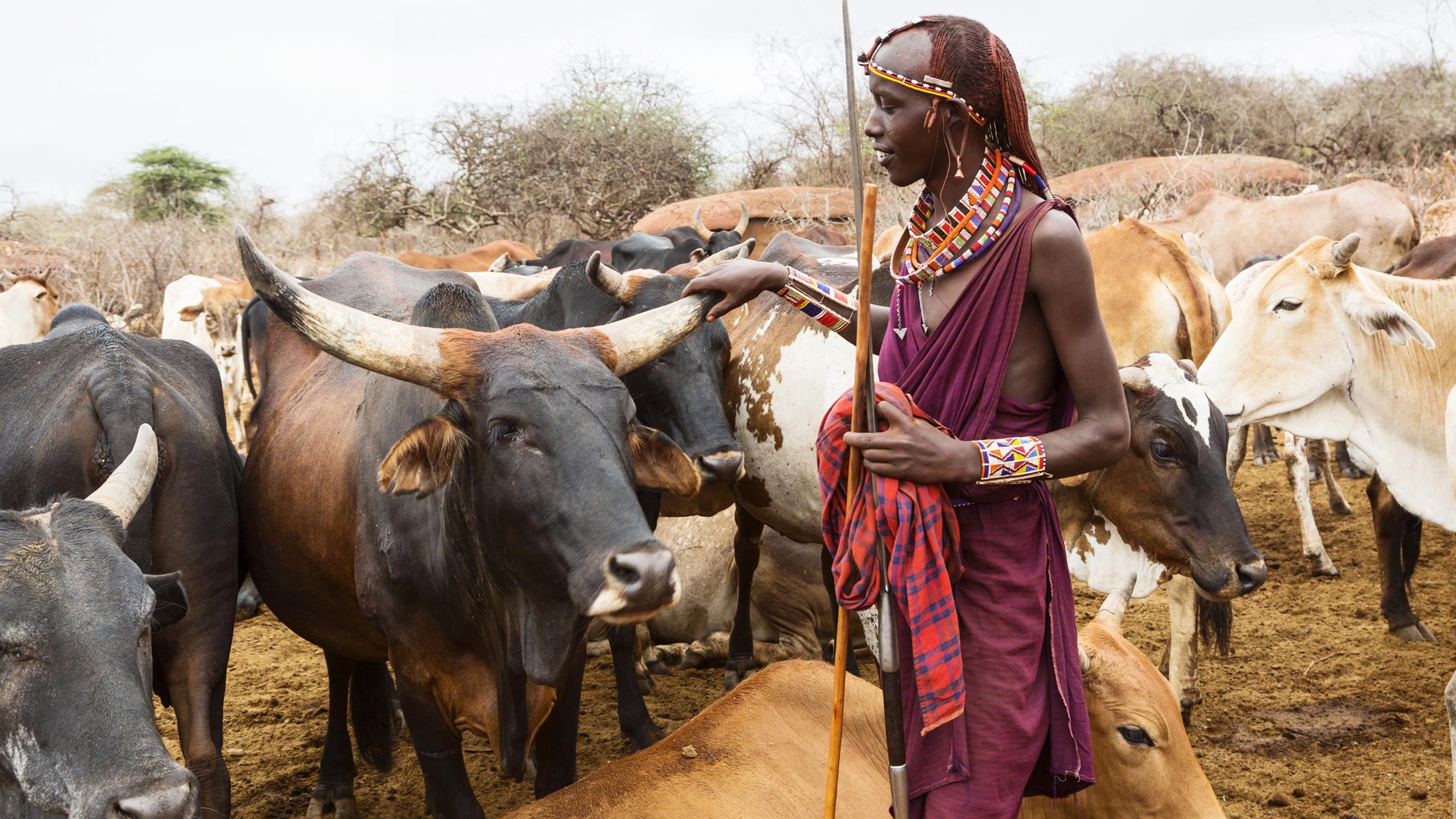
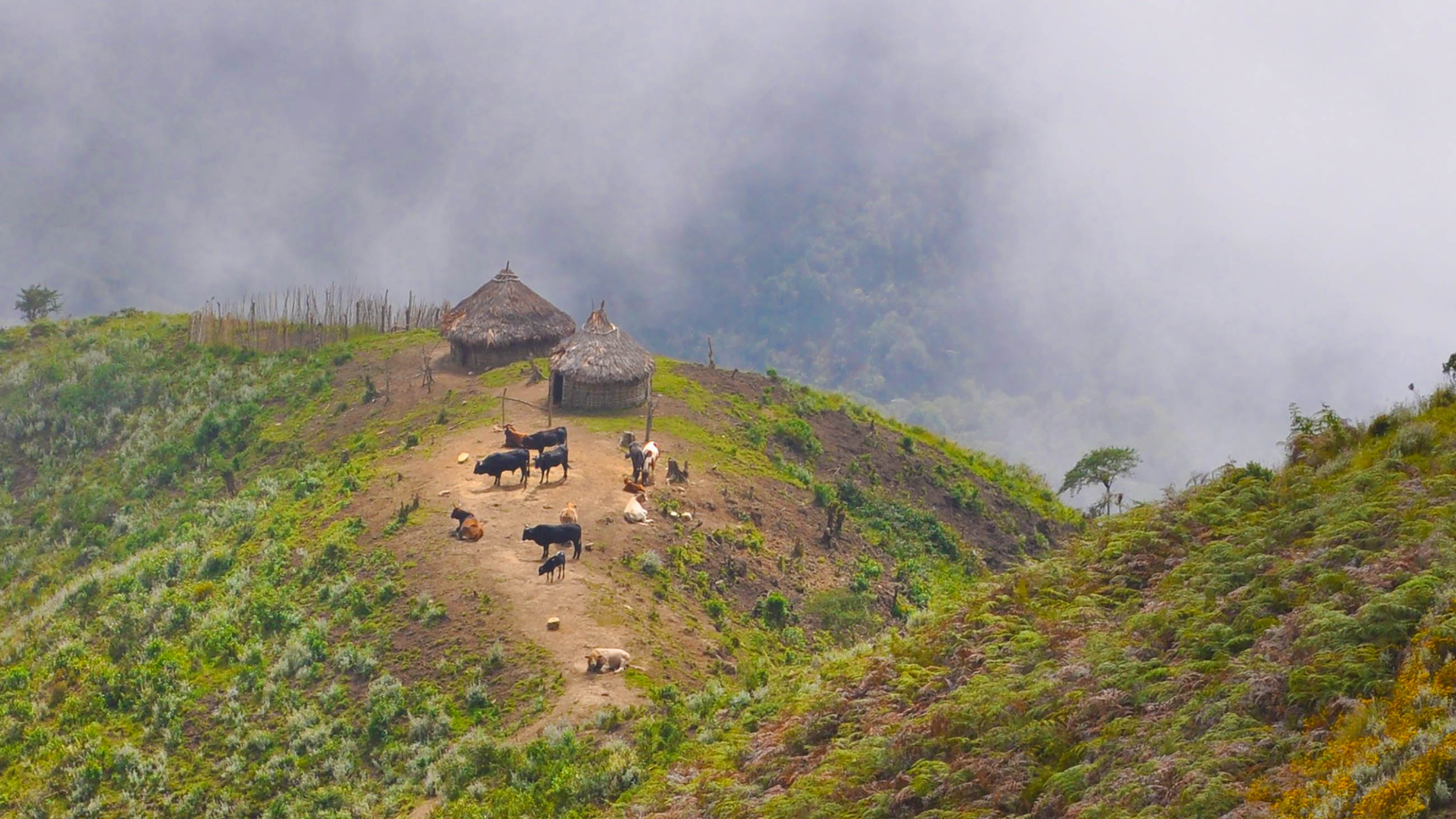
“Many of these areas owe their richness in large measures to deft human management,” says Charles C. Mann, a journalist and author of the book “1491.” Once you “pay attention to the role of native people in these areas, you often find a heavy human presence and activity that has not resulted in tremendous [ecological] loss.”
That’s not universally true, of course, and there are places where indigenous people have an outsized ecological footprint. But for the most part, Mann says, indigenous groups know how to successfully manage the ecosystems in which they live, reshaping them to better serve human needs “while simultaneously maintaining their essential functions and preserving biodiversity.”
Be that as it may, animals are often the focus of conservation efforts, while indigenous populations are seen as secondary. Stephen Redpath, the conservation scientist, suggests that’s a mistake.
After all, to save the tigers in India, or to protect the seals in northeastern Scotland, it takes more than simply pumping up the population numbers of those species. Conservationists ought to come in with a holistic view of the ecosystem to make sure the species can continue to thrive there, Redpath says. In many cases, that requires understanding local human interactions with those species. If snow leopards are killing livestock in the Himalayas and farmers are killing the cats in retaliation, conservationists looking to preserve snow leopard populations must also respect locals’ relationship with the predators, so that the two species can peaceably coexist.
“Wherever there are these big predators or large herbivores that cause a lot of damage to things that people value, these conflicts can erupt,” Redpath says. “If conservation values those species, you get into these complex situations, where [locals and conservationists] have very different objectives.”
For both indigenous groups and conservation organizations, the stakes are becoming ever higher. Climate change is affecting many of these ecosystems, flooding areas close to rivers and oceans, and drying out mountaintops that were once covered with snow. Even when indigenous communities use the best environmental management practices, these changes are happening quickly and on a large scale. In the case of the Kogi, a warming climate means that the vegetation in the páramo might be drier or contain different species than it did even 50 years ago, when the peaks were almost always covered with snow. A fire near the lagoons today could spread much farther and more quickly than the Kogi intended.
But climate isn’t the most immediate force for change. Ramsay, the páramo ecologist, says the more proximate threat to the Kogi, and to people like them, is pressure from other farmers. As agricultural technology improves, non-indigenous farmers are able to cultivate crops at higher climes, and the yield is able to support more people living in the area. That also means that the Kogi, along with many of the species of plants and animals that used to live further down the mountain, are constrained to the mountaintops, Ramsay says, without access to other peaks or hillsides.
Redpath agrees: “There are simply a lot more people, and they’re moving into places where there wasn’t human pressure before.”
◊
On the second day of our hike, we ascended through the narrow paths of the cloud forest, a dense, humid patch of semi-tropical trees. A Kogi teenager and child, both dressed in white with long, dark hair, rode by on a horse, emerging almost magically from the mist.
I greeted them. They stared back, curiously, coolly, saying nothing.
Later that day, after getting caught in a drenching downpour, trudging through the muddy trails and crossing a river, we reached the lowest region of the páramo.
By any measure, the páramo is breathtakingly beautiful. The gray, lichen-covered boulders are punctuated by a few trees, snarled and knotted, and ringed by brambly bushes. Succulents and waxy flowers create a thorny carpet of violet, marigold and burgundy mixed in with the light green grass, which looks more yellow against the electric blue sky. The weather is tempestuous and volatile — in an instant, massive clouds obfuscate anything more than 10 feet ahead, turning a warm, sunny day into a blustery, near-freezing downpour. The quiet is ambient, spacious.
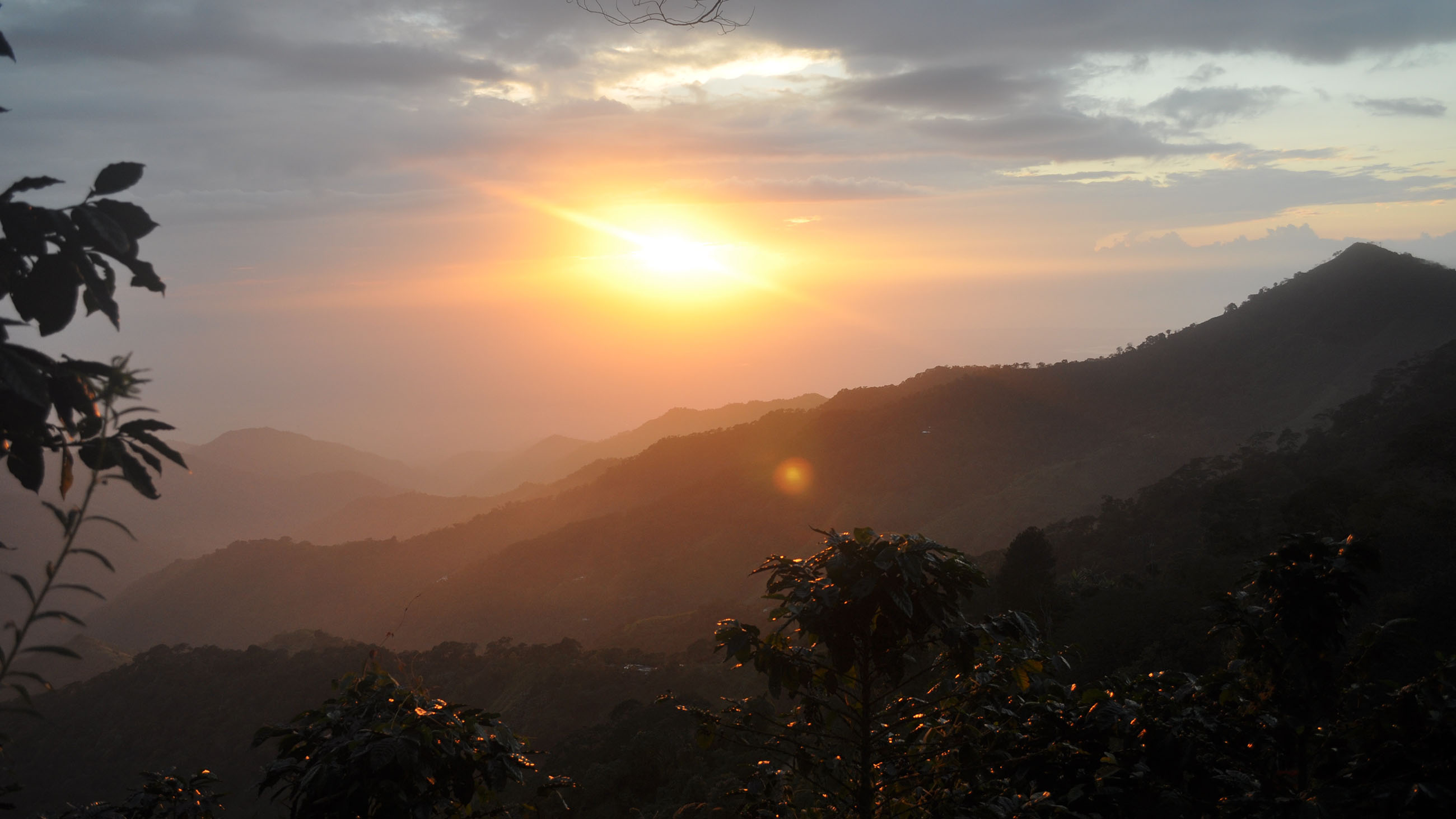
At lower climes, the paths leading up to the páramo snake past coffee plantations sectioned off with barbed wire, their reddish packed earth carved by horse hooves and their owners’ rubber boots pounding mud in the pelting rain. Rey Rojas, a local rancher who was our “fixer” for this excursion said these paths would have once been impassable; just a few years ago, armed guerrillas trafficking cocaine and marijuana overran the páramo, disposing of any trespassers.
Ecologists define the páramo as the high-altitude ecosystem between the end of the tree line and the beginning of the snow line, between about 11,000 and 15,500 feet, depending on the latitude. True páramo is only found in the Andes, in just six countries, but it’s home to 5,000 species, 60 percent of which aren’t found anywhere else on earth. That makes the páramo a gleaming gem in the spectacular crown of biodiversity found in the Andes. Spectacled bears and mountain tapirs feed on the thick, thorny succulents, which evolved to protect their moist leaves against the dry air and the sub-freezing nightly temperatures.
The tussock grasses that characterize the páramo also do not shed their dead leaves, Ramsay notes. Instead, the leaves stay attached to the plant as an insulating adaptation. Every three to five years, farmers burn that combustible dead plant material so that their livestock can feed on the juicy shoots that regenerate. This is so common across the páramo, Ramsay says, that it’s hard for ecologists to say what the ecosystem would be like without it.
Periodic fires can be helpful for some species that live in the páramo, but too frequent burning damages existing organisms, making it harder for them to regenerate once the fires are over. Without the roots to hold the soil down, wind and rain further erode the mountainsides. The soil there is so dark and rich in carbon, Ramsay adds, that it could simply burn on its own if it was dry enough.
The national park starts at particular altitudes in the Sierra Nevada. In Colombia, that designation means that indigenous people can still live there. Locals complain that the government offers little infrastructure or oversight, and the national parks organization doesn’t dispute its lack of authority in the páramo. “The indigenous people have their sacred sites there; they’re the reality [of government] there,” says Harold Niño, an official with the Colombian national parks department.
If rules are broken — if his department learns that there is livestock, construction, or burning, for example — the parks department can order an investigation, though they are often unhurried affairs, typically lasting anywhere from six months to two years.
In the remote lands of the Kogi, however — a good three days’ walk from the nearest town — authorities and their rules can seem irrelevant. Rojas told me that every two years or so, national parks officials knock on the doors of Kogi huts and warn them to stop burning the páramo. Other than that, locals are left to their own devices.
“National parks has no authority here and no organization,” says Pablo Padierna, the owner of a small hotel in San Pedro, the same small town where Alzate, the coffee farmer I met, works. Locals can also report violations to a related government entity called CORPAMAG. Sebastian Ballesteros, a local birder and photographer who was also my guide, says for example that he reported the burning after seeing the destruction on a previous visit to the páramo. But little ever comes of such reports.
“The indigenous people are complying with the policies of the park and are guarding its flora and fauna, the parks official says. “They have their own vision for the land.”
And while it’s true that the Kogi have a spiritual reverence and respect for the natural world, they also need to survive. “The idea that the Kogi live perfectly in harmony with nature, that’s a narrative we’ve imposed on them,” Ballesteros says. “That’s just a story we tell.”
Indeed, the Kogi can seem disconnected from each other and from the natural world around them.
When Alberto asked us to leave, he said he didn’t know Santiago, the Kogi man who had extorted us a day earlier. Down near the town of San Pedro, Ballesteros and I asked a Kogi woman about the political dynamics surrounding the lagoons, and she replied that she knew nothing about them. She had never been there herself. And when Ballesteros asked the Kogi we encountered if they had noticed a hummingbird with a bright blue streak flying around the lagoons, they returned his question with blank stares and a confused shake of the head.
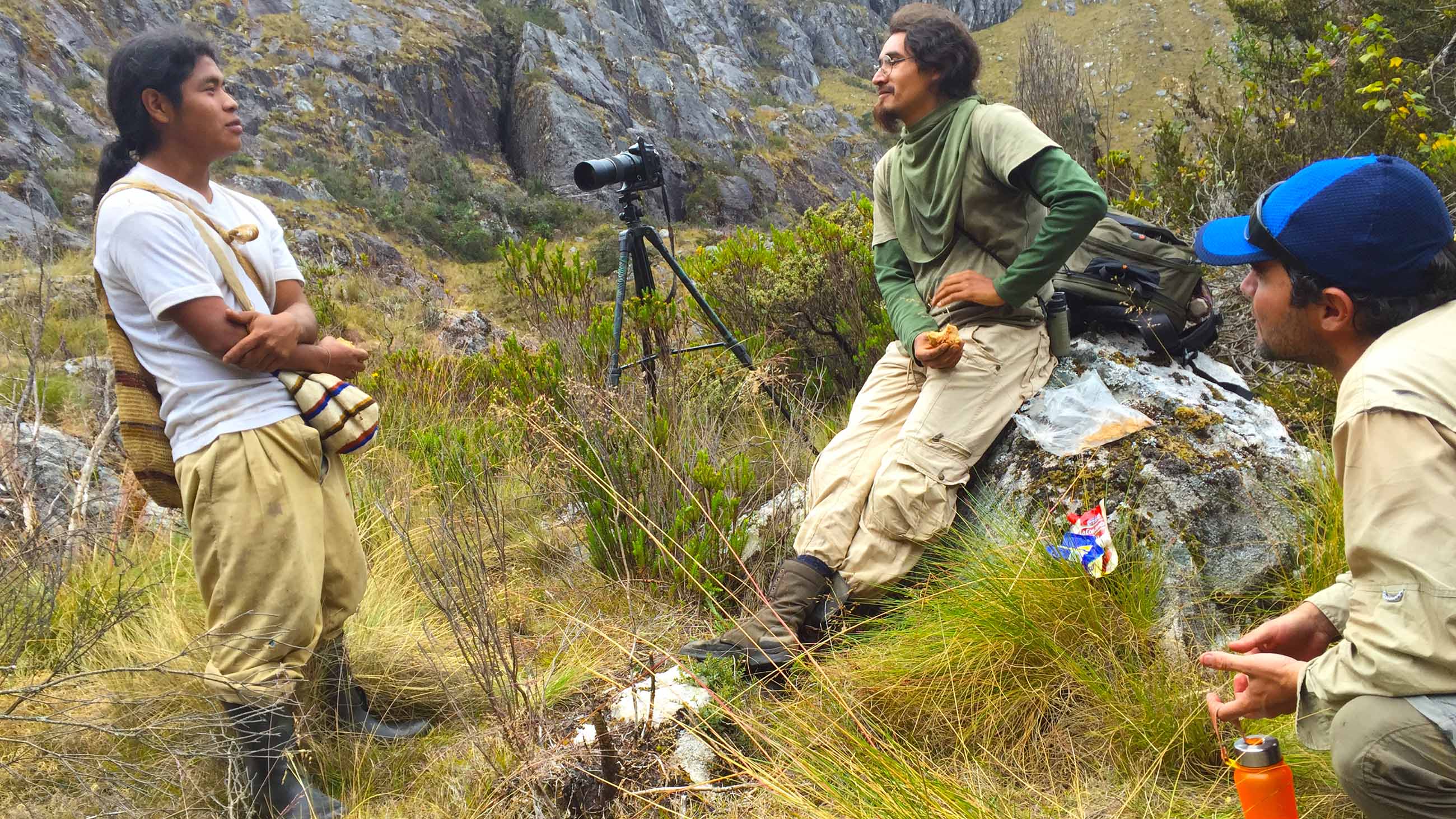
But why should the Kogi — or anyone, for that matter — care about saving the helmetcrest? Some conservationists argue that the small bird is so poorly understood that it may be more vital to the páramo than we appreciate. “If you lose one thing [from an ecosystem], it might make a little difference or it might make a really big one,” says Rasmussen, the Michigan bird expert. “If the situation gets worse, maybe you lose the helmetcrest, then the Santa Marta Wren [also endemic to the area] goes, then soon you have no biodiversity left on that mountaintop. This is happening all over the place. It can be subtle to start and result in a catastrophe of the ecosystem.”
And no one denies that the health of the páramo is important. The water that springs and flows through the Sierra Nevada is the major fount for the one million people who live along the coastal region of Colombia. In spite of existing damage, the water that flows through it is still pure — during our trek, we drank directly from streams, and it was the most delicious water I ever drank. But further destruction could put those water sources in jeopardy, a huge risk to the coastal population as droughts have become more common in recent years.
◊
Some ecologists believe that the only way to save the páramo’s remaining biodiversity is to leave it completely undisturbed, aside of regulated activities, in the style of protected wildlife reserves in the United States.
But no one has suggested this “solution” for the Kogi terrain of the Sierra Nevada. The Kogi would undoubtedly fight for this ancient and sacred homeland, as would the now well-entrenched settlers with their increasingly lucrative farms. And as long as humans remain, so will regular agricultural burns. “Telling everyone to stop burning is a fantasy. People won’t stop burning,” Ramsay says.
Some locals, such as Rojas, suggest that the government could stiffen punishments for people who burn the páramo or continue damaging farming practices. That has worked in some places, Redpath says, but it’s a gamble: “The traditional way of dealing with these coexistence conflicts is that conservationists say, ‘Hey, this is a rare thing and you stop doing that or we’ll impose some nasty penalty.’ That sort of works sometimes,” he says.
But often it doesn’t, Redpath says, and in the case of the Kogi it might do more harm than good — it could breed resentment, and the Kogi could either ignore the government recommendations or actively combat them. Plus, it would be prohibitively expensive for the national parks department to pour manpower into this remote region.
Ecotourism is another possibility — instead of using the páramo for farming or grazing, the Kogi and other locals could make money by leading tourists to see the reserve’s unique flora and fauna. But, again, ecotourism can encompass a wide range of practices; some of these bring income to indigenous stakeholders, some don’t further damage the ecosystem, and some merely line the pockets of wealthy hoteliers.
And though there are certainly benefits for the indigenous people if ecotourism is done right, there are also risks: If the preserve is hard to get to (as the lagoons are), there’s no guarantee that tourists will even come, as Rasmussen points out. But there are also deeper, philosophical risks for the indigenous people. As investigative journalist Mark Dowie writes in his book “Conservation Refugees,” “Assimilation invariably means taking a permanent place in society at the bottom of the ladder.”
In other parts of the world, the most successful solutions have given the locals a seat at the table and empowered them as decision-makers in the negotiations. “You need the communities to take ownership of these conservation schemes,” Redpath says. “If you can sit down and discuss it and build relationships and develop schemes together, your conservation strategy will be much more effective.”
And this idea is gaining traction; indigenous tribes are getting disenfranchised less in recent years, Dowie writes, in part because big nonprofits are realizing the profound effect they can have on a community. He cites a series of successful examples in his book: The Aboriginal Australians, the Izocenos in Bolivia’s Kaa-Iya Gran Chaco National Park, the Tagbanwa on Coron Island in the Philippines — these groups, in conjunction with their respective governments, are managing their land with ecology in mind. This has also occurred in Colombia, not far from the Sierra Nevada, among the six indigenous groups that manage the Mataven Forest.
Most agree that workable solutions occur when everyone involved realizes the need for collaboration — and the importance of the end results. “Compromise doesn’t mean that everyone will be happy,” Redpath says. It’s about trust. “You might not agree, but trust isn’t about agreeing. It’s about trusting people’s decisions and feeling confident that they’re not going to screw you over.”
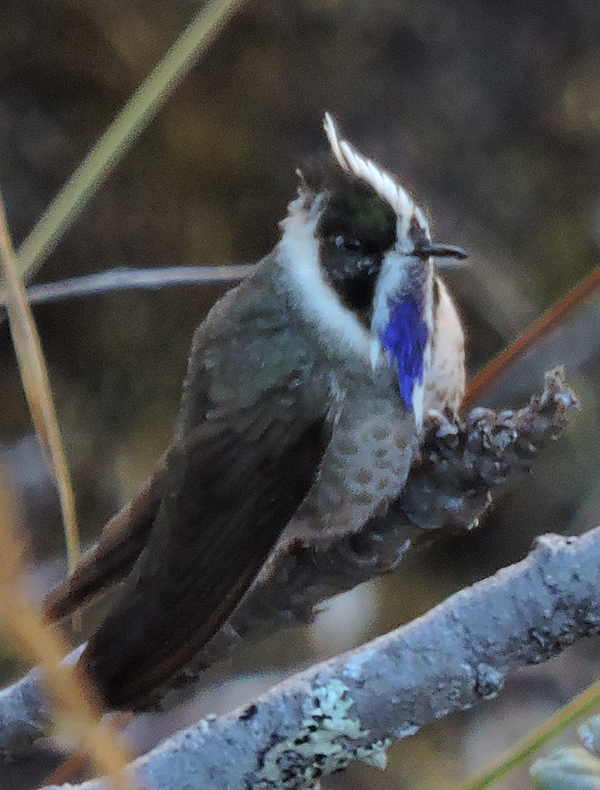
The bird was photographed for the first time in decades last year.
© Fundación ProAves/Carlos Julio Rojas-www.proaves.org
If the helmetcrest stands any chance of survival, experts say, this is what is needed in the Sierra Nevada, and it needs to happen fast. “We can only save the helmetcrest with the communities’ support,” says Luis Felipe Barrera, the director of conservation and protected areas at the nonprofit ProAves.
He suggests an education campaign, run by government agencies and conservation nonprofits, to educate the Kogi about land use practices that would be less damaging to the páramo — raising livestock like llamas and horses instead of cattle, for example. That would mean that the Kogi wouldn’t suffer economically, and the páramo would, at the same time, be less scarred by local farming.
No one thinks this would be an easy sell. The Kogi are famously insular and suspicious. While some nonprofits have arranged productive meetings with the mamos, the Kogi spiritual leaders, the majority of those organizations have failed to connect so far. “The question is if [the Kogi] as a community would be ready to collaborate,” says Barrera.
Still, my visit to the Sierra Nevada leads me to be somewhat optimistic.
Once outsiders do gain their trust, the Kogi have proven that they can be open to non-traditional ways of doing things. Alicia Armanza is a retired nurse in the town of San Javier, a charming and airy village several thousand feet below the páramo. For most of her career, Armanza would walk to the nearby Kogi settlement to provide medical services to a settlement of about 50 people.
The traditional Kogi were surprisingly amenable to vaccines and other forms of medication, Armanza says, because she took the time to carefully explain the benefits of the treatment. A few years ago, some young boys were killing birds for fun, but after a biologist explained the impact that their actions had on the ecosystem, they stopped. When I asked her if the Kogi would be open to a form of environmental education to save the páramo, she gave an enthusiastic yes. “No one has tried that. And they would love it,” Armanza says.
More importantly, the Kogi themselves have indicated that they want to play a role. Alberto told us that we should have initially asked permission to visit from a highly respected Kogi leader living near San Javier, one who would have connected us with a guide to lead us up to the lagoons and make sure we didn’t do anything to damage it. Armanza had never heard of this newfound organization within the Kogi community, but she didn’t seem surprised.
In other parts of the world, the indigenous people who have gotten the best deals with conservation have just one thing in common: they have been vocal in standing up for themselves. Dowie admires this. “Ferocity creates a level of understanding and respect [among outsiders] that some of the more timid and peaceful tribes do not,” he says. “I think it’s easy to get rolled over if you don’t express a certain degree of militancy.”
Right now, there’s no nonprofit or government entity that is pushing for strong conservation action in the Sierra Nevada, but it may happen soon. ProAves, which Barrera is a part of, is looking into a program with government and corporate buy-in to save the helmetcrest and the páramo ecosystem. And they want to listen. “We don’t want to blame the Kogi, or make them feel bad,” Barrera says. “We want to help them make changes and improve their practices.”
◊
On the fifth day of our excursion, we spent our first afternoon birding in the lagoons. We were four outsiders in all — our guide Sebastian; Diego, a Colombian birder; my roommate from back in Brooklyn, Anna, who had joined this unusual quest; and me. We each staked out a spot the mountainside, wedged between boulders and thorny shrubs, scanning for movement.
Other species of birds live in the area — the Black Flowerpiercer, the White-throated Tyrannulet — and we watched those diligently, like they were “friends” of the helmetcrest that could give us clues about the main attraction. After about an hour, Anna broke the silence and drew our attention to a pale, fluffy bird about the size of a baseball that had been fluttering near her for a few minutes.
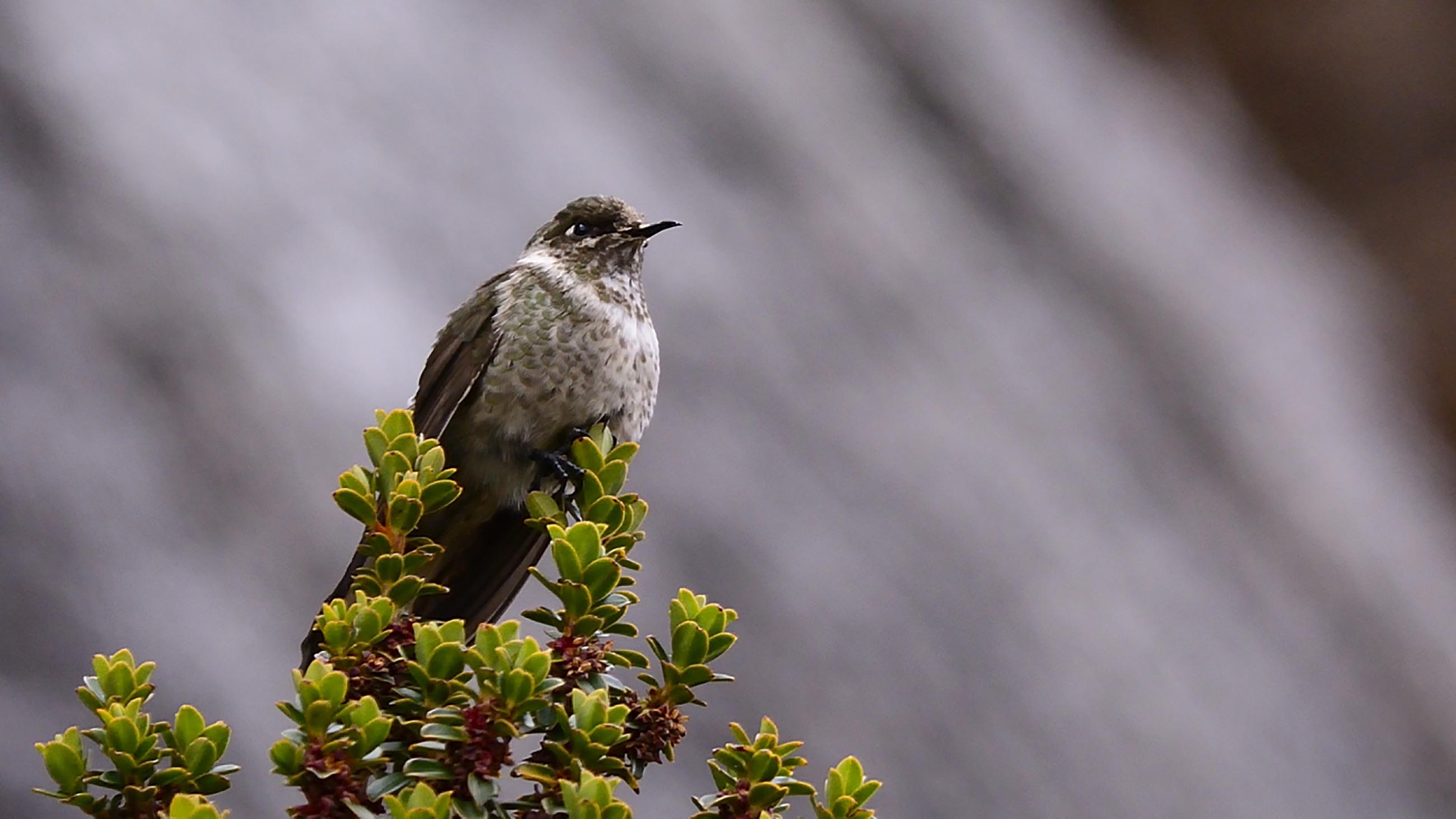



“Is that it?” she asked casually.
“It’s the Oxypogon! Oxypogon!” Sebastian yelled.
“Shit!” Diego exclaimed, raising his binoculars to see it.
I held my breath, not wanting to scare it away.
After a year of obsession, I was finally watching a helmetcrest float in air.
It wasn’t watching me back; it was just going about its daily quest for food. I felt no long-expected, self-congratulatory fizz at being among the few visitors to glimpse it in the last century. And, as I gradually realized, that was just fine with me. Among the lessons of the trip was the realization that this wasn’t about me anyway. I was happy to trade euphoria for relief that I had tangible proof that the bird was still here.
After all, if the helmetcrest was not yet lost, maybe there was a chance that it and the Kogi, and the shimmering highlands of the páramo, would remain, still wild, still waiting, when the next generation of obsessive birders came searching for their own answers.
Alexandra Ossola is a science writer based in New York. She has contributed to Popular Science, Motherboard, and Scienceline.







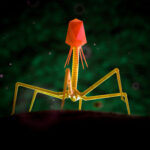
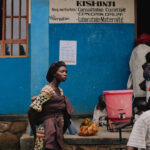
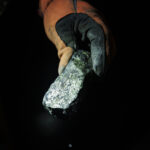
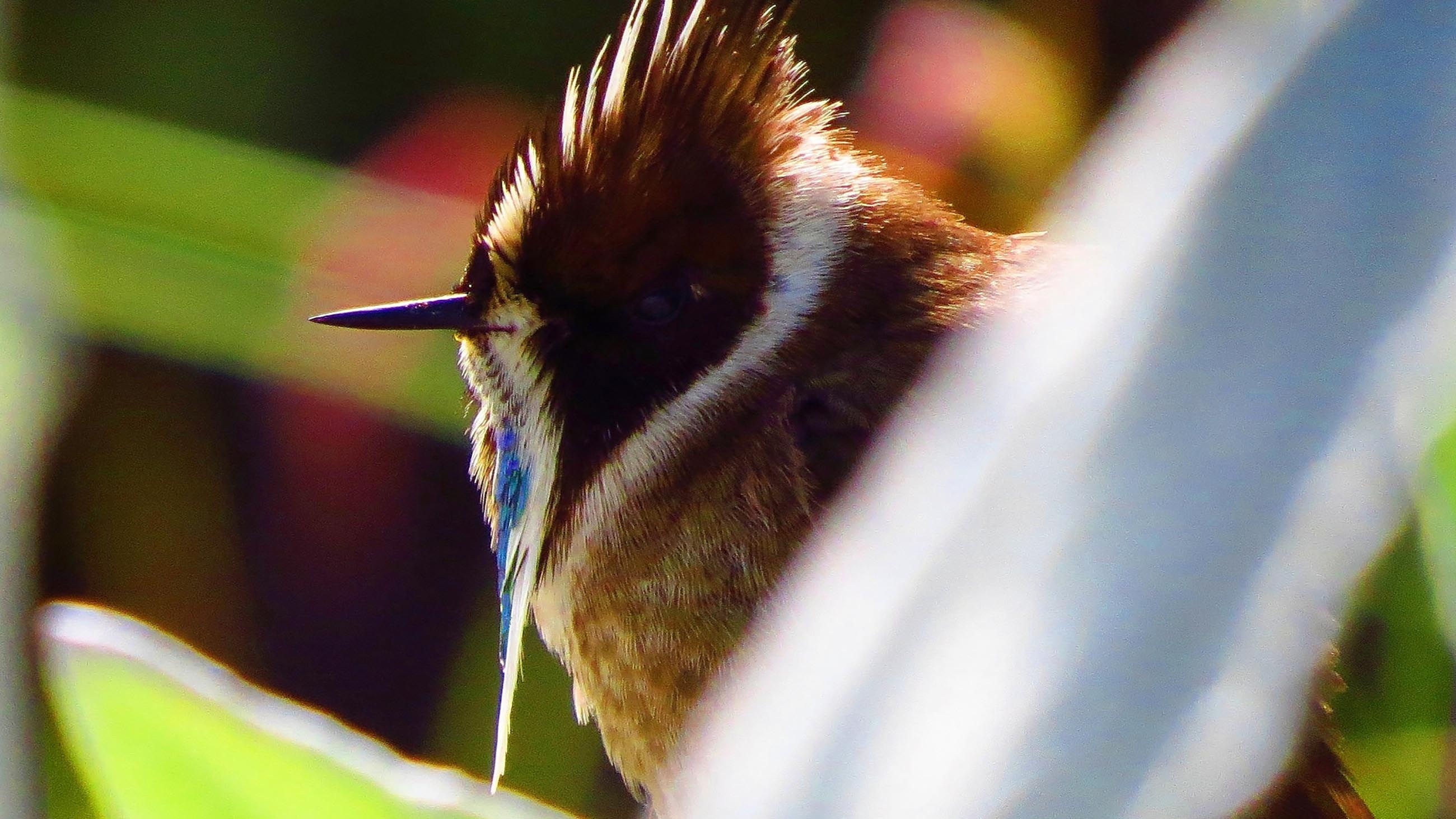
Comments are automatically closed one year after article publication. Archived comments are below.
This article provides an insightful look at the Blue-bearded Helmetcrest, a beautiful and unique bird species found in Colombia, and the challenges it faces due to conflict and conservation efforts. The writer does a great job of highlighting the importance of balancing human activity and preserving biodiversity, and how this particular bird serves as a symbol of this delicate balance. Overall, a well-researched and thought-provoking piece.
Great job for the conservation of the hummingbird Blue Bearded Helmetcrest
A fascinating story of trespassing.
Love your writing, Alex, and your intrepid spirit. Will share with all my FB & Twitter friends.
Well written article, although I am surprised at the lack of knowledge of Kogi organisation. I live in the UK, and have supported the Tairona Heritage Trust for over 20 years. Here is a link to their website:
http://www.taironatrust.org/
Also of interest may be a recent documentary, called Aluna, which is a message to the world from the Kogi people. After much hard work, the film was taken up for general release, and is available on Netflix for instance. Here is a clip from the film, which should help to explain why they are suspicious of strangers arriving unannounced on their ancestral homelands.
https://www.youtube.com/watch?v=e43SD9tuEL4
One other point worth mentioning is that the Sierra is an isolated mountain range, and not part of the Andes. It is the world’s highest coastal mountain range. More information here:
https://en.wikipedia.org/wiki/Sierra_Nevada_de_Santa_Marta
With respect, and kind regards
Stewart Burns
Glasgow, Scotland
Acknowledging that the author is my daughter,
This is a beautifically written piece that is profound in presenting her insights into the complex relationships between endangered species, endangered habitats and endangered indigenous peoples. Her determination to find this endangered bird and make the difficult and challenging trek to see it in person (with the help of a great team) and to brave the unnerving encounters with the Kogi ended up revealing discoveries about a remote part of the world and challenges to modern-day conservation practices that exist in tension with native peoples. Terrific work from a dedicated and knowledgeable professional who brings wit, wisdom and good writing to whatever she tackles.
Incredible piece with some great findings and analysis.
Beautifully written. What an adventure.
GREATLY written Alex!… it was a pleasure to join and help your expedition… some more photos available here at my album https://goo.gl/UJEEyJ and Sebas’ AMAZING shots here https://goo.gl/c2BF2A !!!